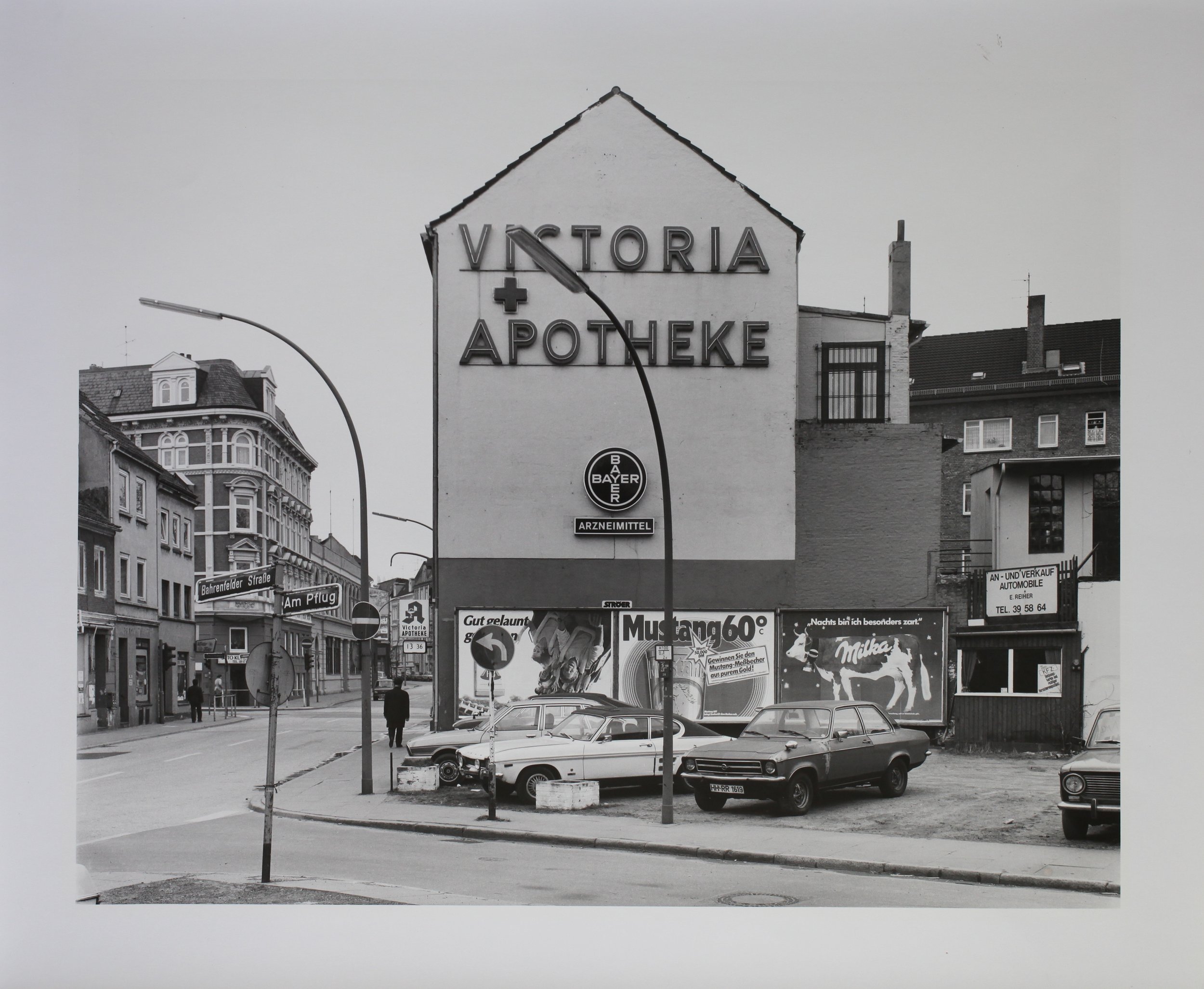
La Plaiv - Petra Wunderlich | Bernhard Knaus Fine Art| Frankfurt am Main
Bernhard Knaus Fine Art | Frankfurt am Main
4. Mai – 29. Juni 2024
La Plaiv
Petra Wunderlich
Die Ausstellung findet im Rahmen der RAY – Triennale der Fotografie statt.
Castell aus La Plaiv © Petra Wunderlich
Petra Wunderlich wendet einen raffinierten und didaktischen Ansatz an, um stoische Schwarz-Weiß-Fotografien zu erstellen, die in der Einzelausstellung 'La Plaiv' die architektonischen Fassaden der malerischen und romantischen Dörfer der gleichnamigen Region in der Schweiz sorgfältig untersuchen.
Wunderlich studierte bei Bernd und Hilla Becher an der Kunstakademie Düsseldorf und wurde Teil der Studierendengeneration der Düsseldorfer Fotoschule. Heute pflegt sie die Tradition der Düsseldorfer Schule der strengen Dokumentation durch eng beschnittene Fotografien, die dem Thema jedes Werkes einen distanzierten, aber diskreten Blick verleihen. Ihre sachliche Haltung und die Serialisierung der Fotografien greifen nüchterne Themen in Stil und Inhalt auf und verstärken die architektonischen Geometrien, die diese Schweizer Landschaft prägen – sowie die mysteriöse Abwesenheit ihrer Bewohnerinnen und Bewohner.
Plaz aus La Plaiv © Petra Wunderlich
Petra Wunderlich applique une approche raffinée et didactique pour créer des photographies stoïques en noir et blanc qui, dans l'exposition individuelle 'La Plaiv', examinent soigneusement les façades architecturales des villages pittoresques et romantiques de la région du même nom en Suisse.
Wunderlich a étudié avec Bernd et Hilla Becher à l'Académie des arts de Düsseldorf et a fait partie de la génération d'étudiants de l'école de photographie de Düsseldorf. Aujourd'hui, elle cultive la tradition de l'école de Düsseldorf de la documentation rigoureuse par des photographies étroitement recadrées, qui confèrent au sujet de chaque œuvre un regard distancié mais discret. Son attitude objective et la sérialisation des photographies reprennent des thèmes sobres dans leur style et leur contenu et renforcent les géométries architecturales qui caractérisent ce paysage suisse - ainsi que l'absence mystérieuse de ses habitants.
Ritscha aus La Plaiv © Petra Wunderlich
Petra Wunderlich applica un approccio raffinato e didattico per creare stoiche fotografie in bianco e nero che esaminano attentamente le facciate architettoniche dei pittoreschi e romantici villaggi dell'omonima regione svizzera nella mostra personale "La Plaiv".
Wunderlich ha studiato sotto la guida di Bernd e Hilla Becher all'Accademia d'Arte di Düsseldorf ed è entrata a far parte della generazione di studenti della Scuola di Fotografia di Düsseldorf. Oggi mantiene la tradizione della Scuola di Düsseldorf di una documentazione rigorosa, attraverso fotografie dai ritagli stretti che conferiscono al soggetto di ogni opera uno sguardo distante ma discreto. Il suo approccio materico e la serialità delle fotografie riprendono temi sobri nello stile e nel contenuto e rafforzano le geometrie architettoniche che caratterizzano questo paesaggio svizzero, così come la misteriosa assenza dei suoi abitanti.
Via Maistra aus La Plaiv © Petra Wunderlich
Petra Wunderlich applies a refined and didactic approach to create stoic black and white photographies that carefully examine the architectural facades of the picturesque and romantic villages of the eponymous region in Switzerland in the solo exhibition 'La Plaiv'.
Wunderlich studied under Bernd and Hilla Becher at the Düsseldorf Art Academy and became part of the student generation of the Düsseldorf School of Photography. Today, she maintains the Düsseldorf School's tradition of strict documentation through tightly cropped photographs that lend the subject of each work a distanced but discreet gaze. Her pragmatic approach and the serialisation of the photographs take up sober themes in style and content and reinforce the architectural geometries that characterise this Swiss landscape - as well as the mysterious absence of its inhabitants.
(Text: Bernhard Knaus Fine Art, Frankfurt am Main)



























